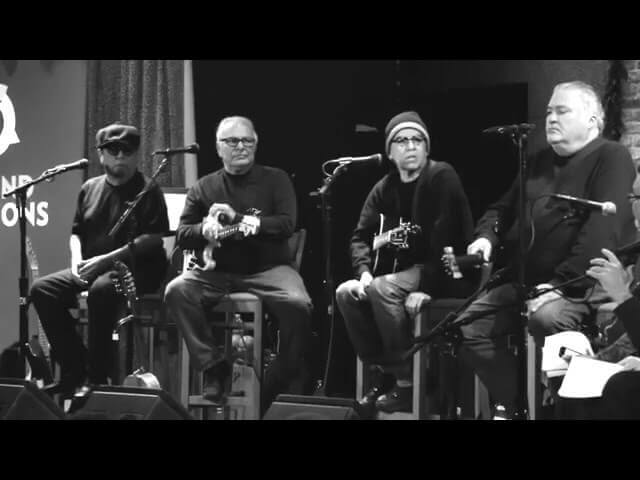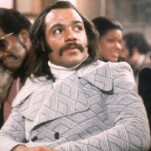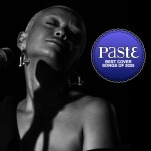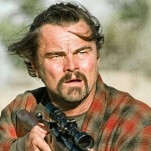Beyond “La Bamba”: Los Lobos is the best rock band nobody’s listening to

When Los Lobos loaded into City Winery in Chicago back in February, it was equal parts rock show and commemoration. The East L.A. band was in town to perform and be interviewed for a special live taping of Sound Opinions, the venerable rock/talk radio show hosted by Jim DeRogatis and Greg Kot. Musically the band was in fine form, chomping at cuts ranging from longtime set staples to tracks from last year’s excellent Gates Of Gold. But one of the most ear-grabbing moments of the show came not from the band, but from DeRogatis. Never one to shy away from a firm stance, DeRo resolutely proclaimed Los Lobos to be “one of the best bands in America… in American history.”
Those kind of accolades would seem to be part and parcel for a show designed to celebrate the band’s extensive history, but DeRogatis’ words are worth reading into a little bit deeper. There is no single, sweeping metric to officially earn a group the title of best band in America, but the label is typically reserved for bands of a certain level of grandeur. Bruce Springsteen And The E Street Band are lionized as musical spokespeople for America’s blue-collar working class. Tom Petty And The Heartbreakers similarly pull at people’s heartstrings with huge anthems of dreamers and ne’er-do-wells. In more recent years, Pearl Jam has taken populist arena rock well into the new millennium. Generally speaking, the “best band in America” tag is one afforded to those with considerable critical and—perhaps more pointedly—commercial clout.
To that end, it’s easy to overlook a band like Los Lobos on face value. Headline-grabbing superstars they’re not; but if we’re to judge the best band in America strictly in terms of body of work, Los Lobos has proven itself over the past 40-plus years to be underrated-but-well-deserving contenders for the crown. A band’s band if there ever was one, David Hidalgo, Louie Pérez, Conrad Lozano, Cesar Rosas, and Steve Berlin have quietly but steadily built one of the most impressive catalogs of any American rock ’n’ roll band in the last 30 years. That fact has been well noted by critics in the back pages of magazines and newspapers for years, but the extent of their work isn’t as widely acknowledged by the broader public as that of many of their peers. That’s unfortunate for a band whose rootsy-but-diverse mashup of styles and genres has seldom been less than great.
Los Lobos’ story is one of a band whose public perception hardly does justice to its reality. Hidalgo and Pérez met as students at Garfield High School, and soon afterward began writing songs together. By 1973, the band’s core lineup of Hidalgo, Pérez, Lozano, and Rosas was in place, allowing for its first record, Sí Se Puede!, in 1976. They returned two years later with Los Lobos Del Este De Los Angeles, which continued the band’s faithful exploration of traditional Mexican music. With those records, Los Lobos wasn’t just outlining its sound, but also its work ethic. While most bands took to the clubs, the Lobos made a name for themselves in and around Los Angeles playing weddings, restaurants, and dances, all while working regular jobs.
Defined largely as Mexican-American traditionalists, Los Lobos nonetheless began to fall in with a decidedly different musical crowd by the turn of the decade. L.A.’s growing punk scene was home to many bands including The Germs, The Gun Club, and The Go-Go’s, among others. At the center of it all was Slash Records, which put out Los Lobos’ next record, 1983’s …And A Time To Dance. Produced by T-Bone Burnett and future Lobo Steve Berlin (then of Slash labelmates The Blasters), the band stepped out into the light with their own songs, which incorporated splashes of blues, soul, and early American rock ’n’ roll into its well-honed cultural sound. The record also showcased the band’s ability to handle a well-placed cover tune. Its take on “Come On Let’s Go” pulled off the neat trick of being faithful to Ritchie Valens’ original version while also sounding current. There was little telling then, but the cover was prelude to big things to come.
Despite the Slash connection, Los Lobos were never dyed-in-the-wool products of L.A. punk the way most of their contemporaries were (a fabled gig opening for Public Image Ltd in 1980 went notoriously south). Still, the label liked the roots-rock element the Lobos brought to its roster. How Will The Wolf Survive?, released in 1984, was the band’s first major musical strike outside of its native Los Angeles. Once content just to dip their toes in rock waters, Wolf gave equal room to those rock ’n’ roll influences that used to just shade in the corners. Be it the blues stomp of lead track “Don’t Worry Baby” or the swinging soul of “I Got Loaded,” the band was working its way out of a box its earliest records might have threatened to paint it in, all without abandoning the traditional music it built its name on. Wolf earned high marks from the likes of Rolling Stone and Robert Christgau, who ranked the record third behind only Purple Rain and Born In The U.S.A. on The Village Voice’s year-end Pazz & Jop list.
































![Rob Reiner's son booked for murder amid homicide investigation [Updated]](https://img.pastemagazine.com/wp-content/avuploads/2025/12/15131025/MixCollage-15-Dec-2025-01-10-PM-9121.jpg)







